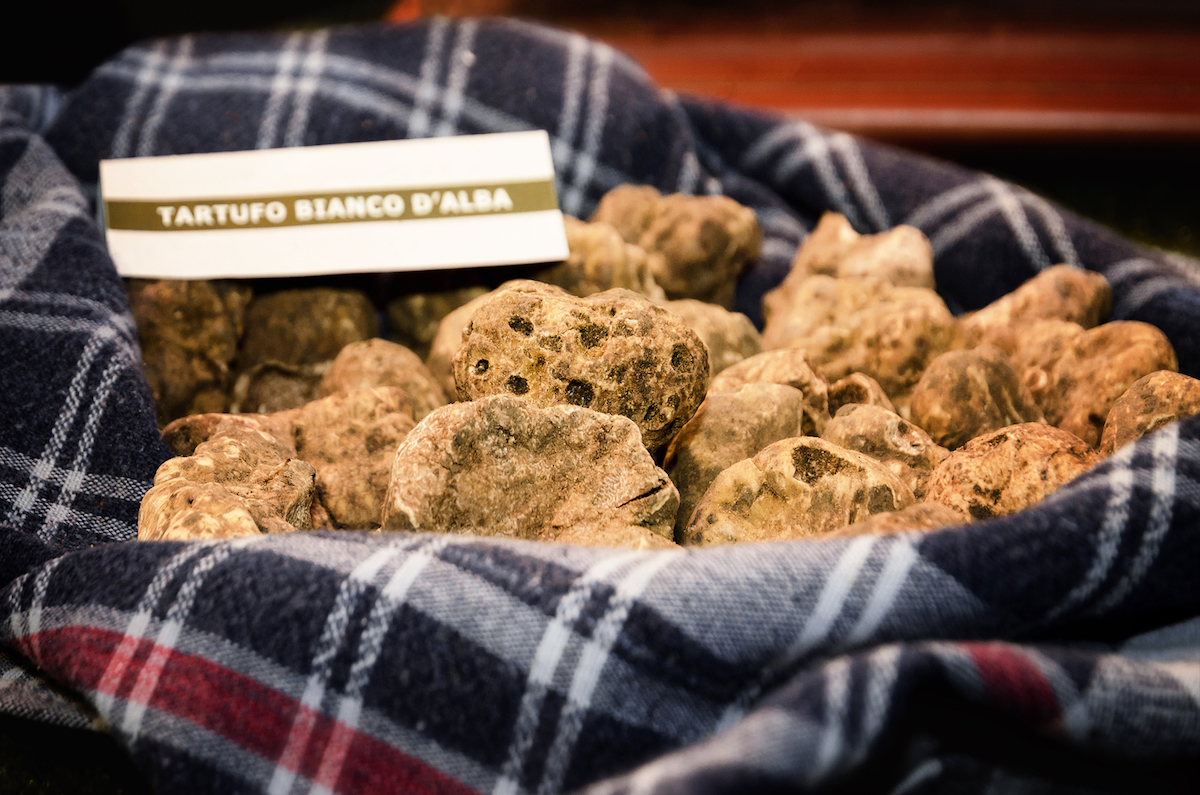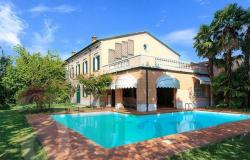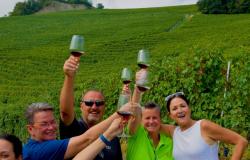We love fall travel, when the temperatures are still pleasant enough but the crowds of summer have usually subsided. It is also that time of the year to enjoy beautiful colors as nature transitions into the colder season, and a time when many iconic food products of Italy are harvested and celebrated at local food and wine festivals.
Here are four destinations you can reach by train catering to different tastes in travel, whether you’re all about city buzz or mountain quiet, whether you love food or quaint villages.
For mountain lovers

The Altopiano del Renon is a good place to be if you’re looking for some peace and solitude, as well as restorative walks in nature. This delightfully quiet plateau stands above Bolzano at an altitude varying between 900 and 1300 meters, and is such a contrast with the hustle and bustle of the regional capital of Alto Adige/South Tyrol, which is easily reached via high-speed train.
Once you get off the train station, it’s an easy 10-minute walk to the spectacular Renon cable car, which, in 12 minutes, will whisk you up to the Renon, as you enjoy the amazing views of Bolzano, the plateau itself and the mountains all around.
The best way to experience the Renon is on foot as numerous, well-marked trails in the woods lead to alpine farms, pastures, picturesque little lakes, like Costalovara, and the bizarre ‘earth pyramids,’ cone-shaped pillars formed by deposited clay with a boulder on top.
Make sure you walk the Freud Promenade, so called as a homage to the founder of psychoanalysis, who loved to vacation here; it connects the village of Soprabolzano to the village of Collalbo along a path in the woods, which at times opens up to reveal beautiful views of some of the most famous peaks of the Dolomites. Plus, you will get to enjoy the beauty of the foliage, which is at its peak between mid-October and mid-November.
Return via the narrow gauge train (or ‘trenino del Renon,’), the historic little train in operation on the Renon since 1907.
For the city fan

Milan, too often overlooked, is a great fall destination, easily reached by high-speed train and well connected to other major Italian cities.
Should the weather turn bad, you have plenty of options to keep yourself entertained, starting with the city’s favorite pastime, the aperitivo. Why not do it classic all the way with a spritz on the Aperol terrace in Piazza Duomo?
Two areas that are perfect for enjoying Milan’s atmosphere are the Brera neighborhood and the Navigli.
In Brera, stroll the small alleys and cozy squares, stop at one of the many cafés, enjoy a dinner of saffron risotto with ossobuco by candlelight, and visit the famous Pinacoteca, home to one of the most important collections of Italian paintings.
The Navigli are perfect for a romantic walk at sunset, followed by aperitivo and dinner. Visit the nearby Church of Sant’Ambrogio, one of the oldest churches in the city.
For a bit of culture and history, head to Castello Sforzesco, where you should not miss the Museum of Ancient Art, with Michelangelo's Pietà Rondanini, and the surrounding Sempione park. For a dive into more modern art, nearby is the Museum of the Novecento, with works by Picasso, Kandinskij and Modigliani.
If the weather complies, then even Milano is great for admiring the foliage. Parco Sempione mentioned above, and then Giardino della Villa Belgiojoso Bonaparte, Giardini Indro Montanelli, Parco delle Basiliche.
End with a little shopping to find the latest fashion trends for fall/winter. Via Montenapoleone, via Manzoni, Corso Venezia and via della Spiga make up the famous fashion district where you will find all the big names in fashion, from Prada to Versace to Gucci. If that’s too high end, no problem, in Milan there is shopping for all budgets, and fun vintage markets where you can find unique pieces.
For those in search of picture-perfect, quaint Italy

The village of Laigueglia in Liguria combines the charm of a little Italian borgo with the quiet fascination of the sea in low season.
The first impression once you reach this village located on the coast of the Riviera di Ponente (western Riviera) is indeed of the beach almost overlapping with the urban space, as a reminder that this was a fishing village, whose economy was based on traditional and coral fishing, before the advent of tourism.
Part of ‘Italy’s most beautiful villages’ network, Laigueglia will charm you with its picturesque alleys, pastel-colored houses and little squares overlooking the sea. From the beach, which in late fall/winter is filled with colorful boats and nets, brought on the shore from the sea, you can see the particular, almost amphitheater-like, shape of the town. Enjoy typical dishes such as stuffed sardines at its restaurants overlooking the sea.
Laigueglia, which can be reached by regional train, offers many opportunities for further trips. Take a boat trip to Gallinara island, and go to Alassio, one of the most famous resorts on the Riviera di Ponente. Behind Laigueglia are hills dotted with olive trees and maritime vegetation, where you can walk or bike. Walk the trail from Capo Mele to Alassio for nice seaside views; see Albenga, which has perhaps the most beautiful historic center of the western Ligurian coast, and Varigotti, with its pastel-colored houses facing the sea.
For foodies

The Langhe, a hilly area of Piedmont famous for its wines, truffle and cheeses, is ideal to visit in the fall, not just for the colors, but also because it’s the perfect season to go truffle hunting, wine tasting and attend the numerous food fairs.
Alba, the capital of the Langhe, can be reached by train. Its white truffle is celebrated every year during a fair held in October and November, the International Alba White Truffle Fair. This is the area where such iconic wines as Barolo and Barbaresco are produced. In the town itself, take a break from eating and drinking (!) to visit the Cathedral of San Lorenzo, the Palazzo Comunale, and the medieval towers (Alba once had numerous towers for defensive purposes).
From Alba, a twenty-minute train ride will take you to Bra, the hometown of the Slow Food movement, which in nearby Pollenzo has opened its University of Gastronomic Science, and where the Wine Bank holds samples of hundreds of Italian Doc and Docg wine labels (the most prestigious).
Bra, located in the Roero hills, declared a Unesco site along with Langhe and Monferrato, is the symbol of Piedmontese Baroque and of gastronomic excellence. Every two years in September, Bra hosts Cheese, an international festival organized by Slow Food which features artisanal cheese makers from around the world.









